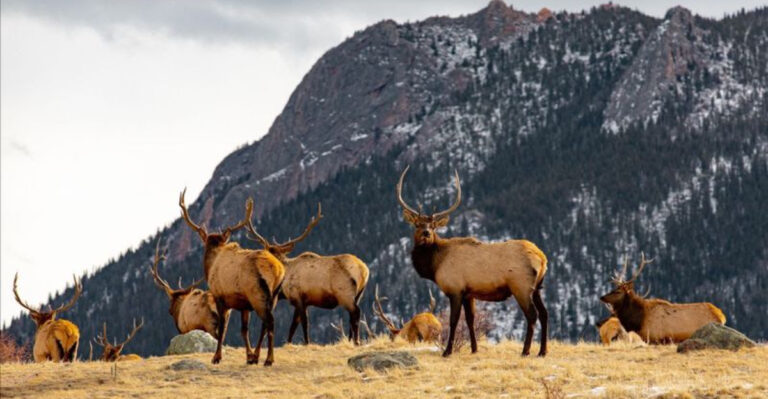14 Blue-Tongued Animals You Didn’t Know Existed
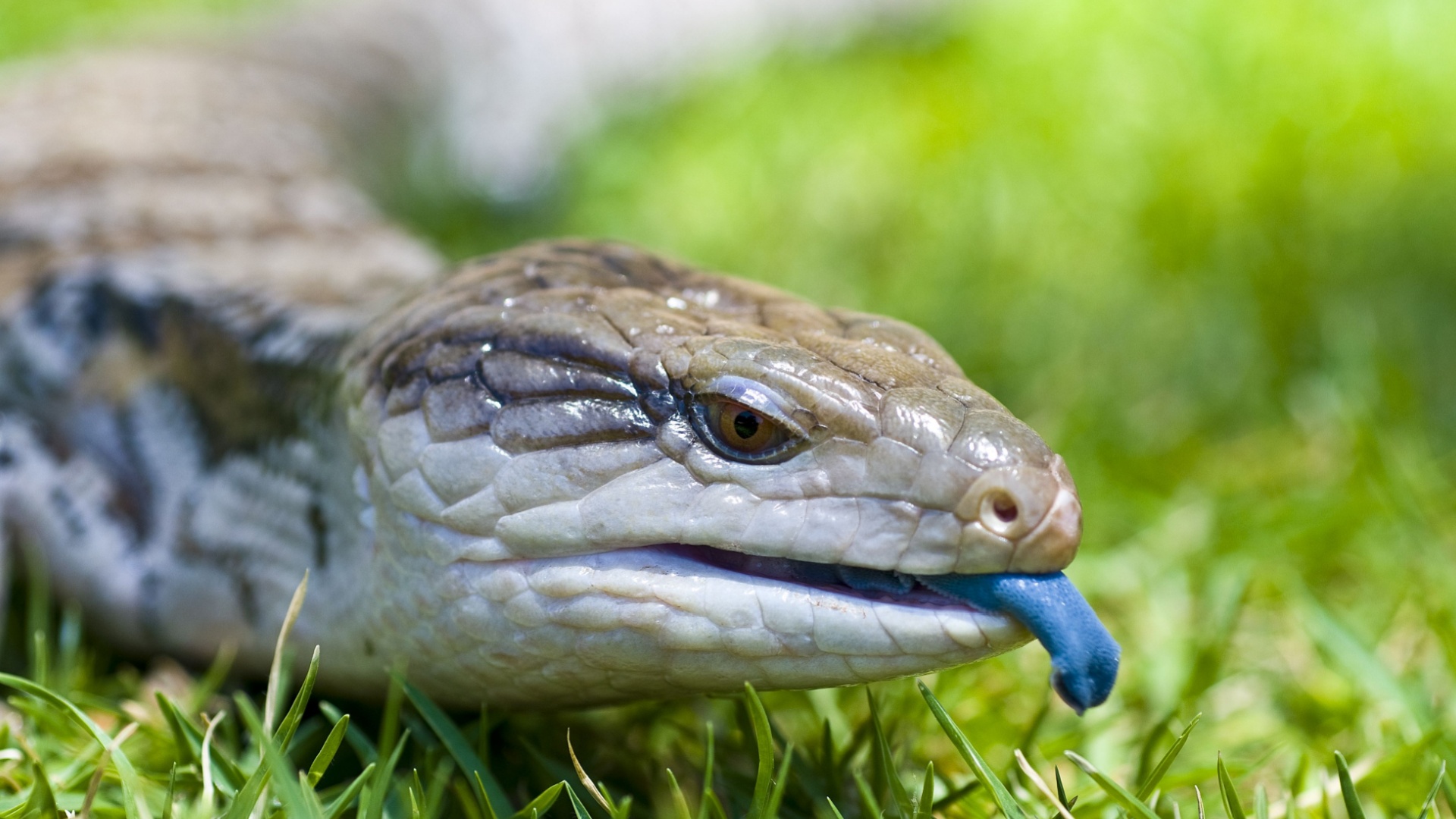
Welcome to a fascinating exploration of the animal kingdom’s less-known wonders. Among nature’s myriad surprises are creatures with an unusual feature – a blue tongue.
This intriguing characteristic can be found across various species around the world. From reptiles to mammals, these creatures exhibit this rare coloration for reasons as diverse as themselves.
Get ready for an eye-opening adventure as we introduce you to blue-tongued animals you probably didn’t know existed.
1. Blue-Tongued Skink
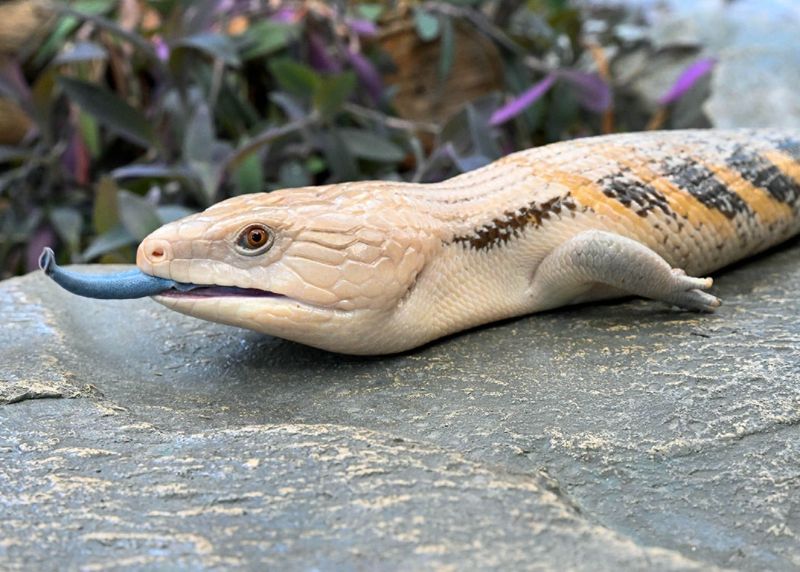
Native to Australia, the Blue-Tongued Skink is a unique reptile with a striking blue tongue. This lizard uses its vibrant tongue to deter predators, flashing it as a warning signal. Its tongue’s color can surprise potential threats, providing the skink with a chance to escape.
Unlike many reptiles, the Blue-Tongued Skink is relatively docile and often kept as a pet. Its calm disposition makes it a favorite among reptile enthusiasts. This skink’s adaptability to various environments contributes to its widespread presence in Australian habitats.
In addition to its blue tongue, the skink has a robust, elongated body and short limbs. It typically measures between 15 and 24 inches in length. Its diet mainly consists of insects, fruits, and vegetables, reflecting its omnivorous nature.
Whether in the wild or captivity, the Blue-Tongued Skink continues to intrigue with its bold coloration and gentle demeanor.
2. Chow Chow

Chow Chows are one of the few dog breeds known for their distinctive blue-black tongues. This ancient breed hails from China and is known for its lion-like appearance and aloof demeanor. The origins of the Chow Chow’s blue tongue are a topic of intrigue among dog enthusiasts. These dogs are often seen as dignified and independent, traits that have been cultivated over centuries.
Their blue tongues are one of their most unique features, setting them apart from other breeds. The color is not just a surface trait; it carries a genetic basis that links them to their rare trait. Chow Chows require early socialization and training due to their reserved nature.
Despite their sometimes standoffish appearance, they form strong bonds with their families. Their grooming needs are significant, requiring regular brushing to maintain their thick, luxurious coats. In the canine world, the Chow Chow remains a symbol of elegance and mystery, largely due to its unique tongue.
3. Giraffe
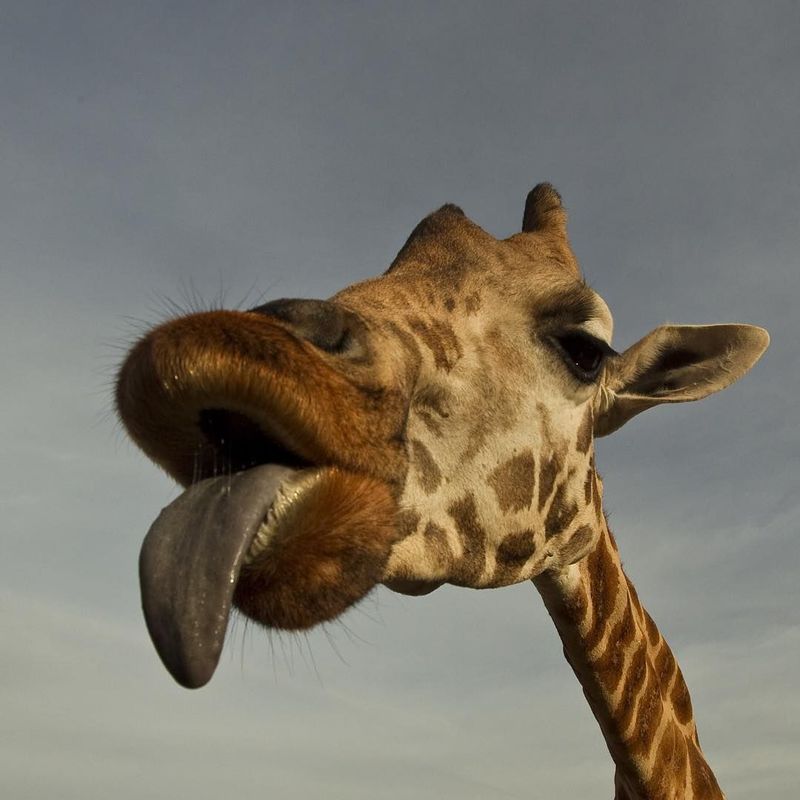
Giraffes are renowned for their long necks and spotted patterns, but they also have an impressive blue-black tongue. This adaptation plays a crucial role in their survival, allowing them to strip leaves and foliage from tall trees with precision.
Measuring up to 20 inches, the giraffe’s tongue is both prehensile and tough. Its dark color helps protect it from sunburn, a necessary adaptation given the giraffe’s habitat in sunny African savannahs. This distinct feature aids them in accessing food that other herbivores cannot reach.
The giraffe’s tongue is just one of many adaptations that make it successful in its environment. Their towering stature and unique feeding mechanism allow them to thrive where resources are scarce.
As one of nature’s tallest creatures, the giraffe’s blue tongue remains a fascinating aspect of its biology, sparking curiosity and admiration worldwide.
4. Okapi
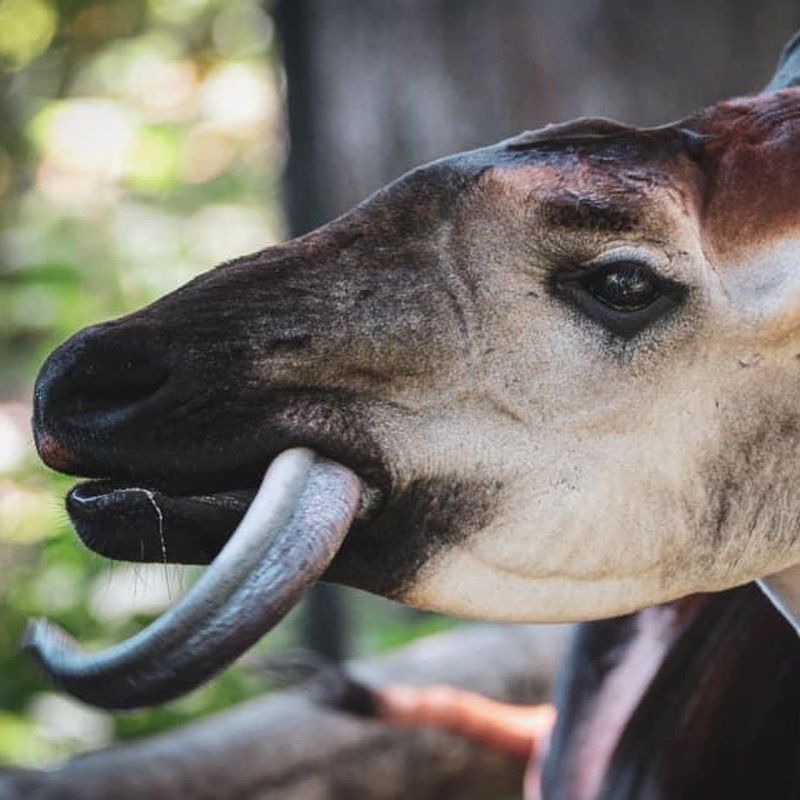
Often referred to as the “forest giraffe,” the Okapi is a rare and elusive animal found in the rainforests of the Congo. Despite its zebra-like stripes, it is closely related to the giraffe and shares its relative’s characteristic blue-black tongue.
This tongue is vital for foraging, allowing the Okapi to reach and strip leaves from branches in its dense forest habitat. The dark color of the tongue helps prevent sunburn, similar to the giraffe’s adaptation. The Okapi’s unique appearance and secretive nature make it a subject of fascination.
It is one of the world’s last undiscovered large mammals, discovered only in the early 20th century. Despite its shyness, the Okapi’s striking look and mysterious behavior continue to captivate those fortunate enough to observe it. Besides its blue tongue, there are many fascinating facts to uncover about this elusive creature, from its unique camouflage to its surprising giraffe-like traits.
5. Impala
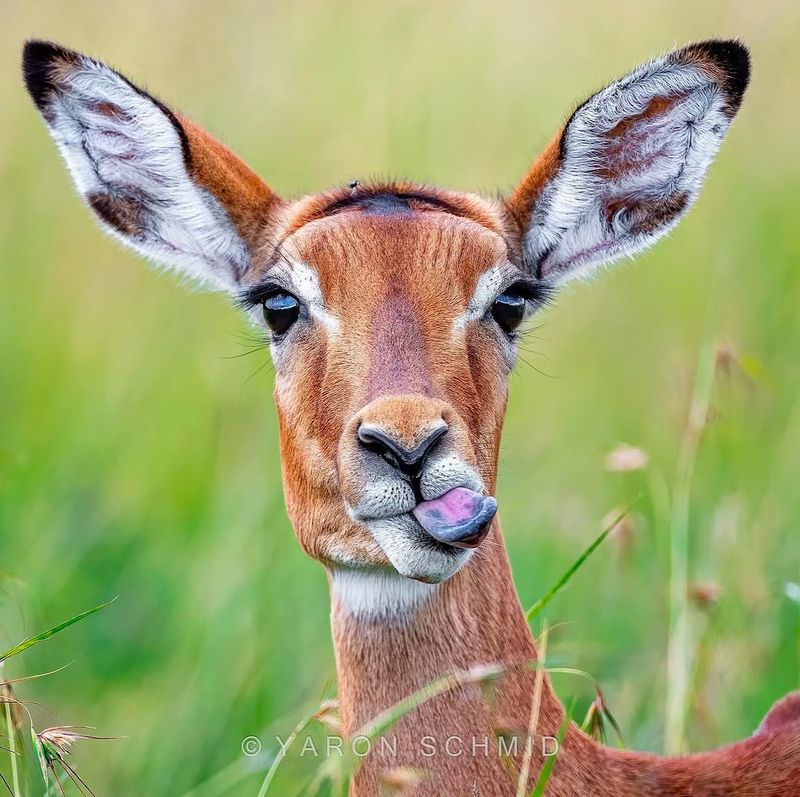
The Impala, a graceful antelope found in the African savannah, possesses a slightly blue tongue that aids in its feeding habits. This hue helps them in selecting nutritious foliage, a subtle but significant adaptation in its diet.
In a landscape where competition for food is intense, the Impala’s blue-tinged tongue gives it an edge. It allows the animal to taste and choose the most beneficial plants, ensuring its dietary needs are met. Impalas are known for their agility and speed, which they use to evade predators.
Their tongue’s unique coloration is just one of many adaptations that support their survival in the wild. As a common yet elegant sight in Africa, the Impala displays the subtle complexity of nature’s designs.
6. Mandrill
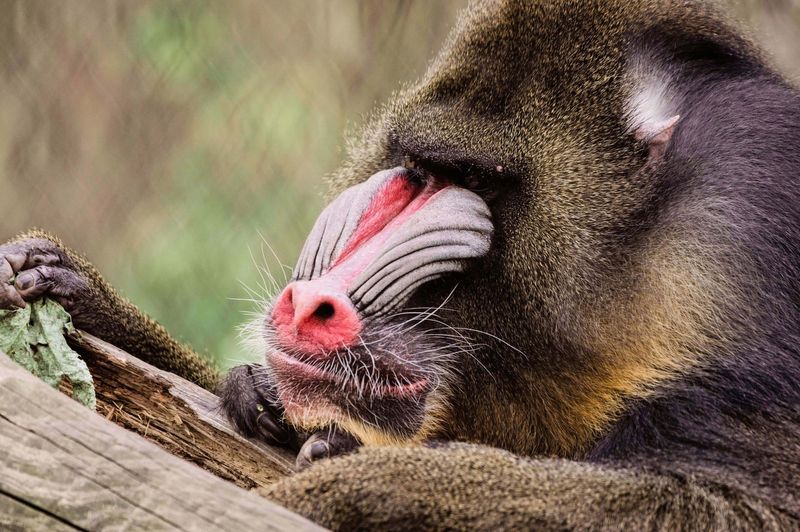
Famous for its vibrant facial coloration, the Mandrill also sports a blue tongue. Found in the rainforests of Central Africa, this primate’s colorful appearance plays a role in communication and social interaction within its groups.
The blue tongue is part of the Mandrill’s complex signaling system. Along with its bright face, it helps convey emotions and intentions to other members of its troop. This feature reflects the Mandrill’s highly social and intelligent nature.
In addition to its striking appearance, the Mandrill is known for its expressive behavior. Its habitat in dense forests requires keen adaptation, including its blue tongue. This unique trait, combined with its social dynamics, makes the Mandrill one of the most captivating primates in the animal kingdom.
7. Hyacinth Macaw
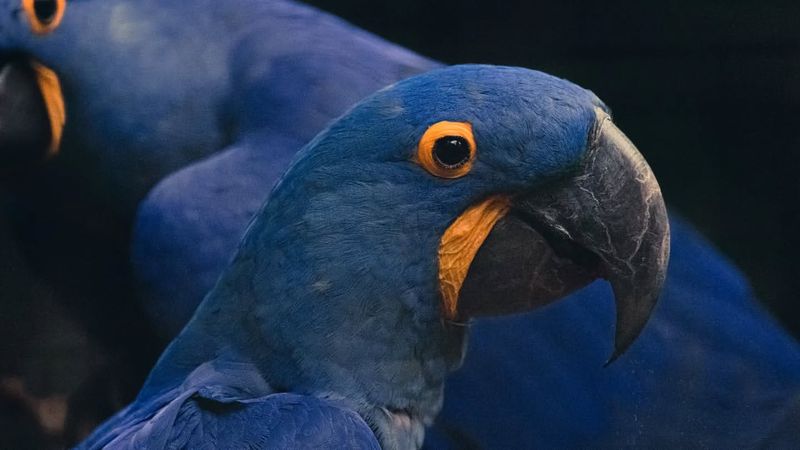
The Hyacinth Macaw is the largest flying parrot and is easily recognizable by its vibrant blue plumage, which extends to its tongue. Native to the Amazon rainforest, this bird’s blue tongue complements its striking appearance.
This macaw’s tongue plays a crucial role in manipulating food, such as cracking nuts and seeds. Its strong, dexterous tongue aids in feeding, reflecting its specialized dietary needs and ecological niche. Aside from its physical features, the Hyacinth Macaw is known for its intelligence and social behavior.
These birds often form strong pair bonds and communicate with a range of vocalizations. The unique combination of their blue tongue and interactive nature makes the Hyacinth Macaw a true spectacle of the Amazon.
8. Black Wildebeest
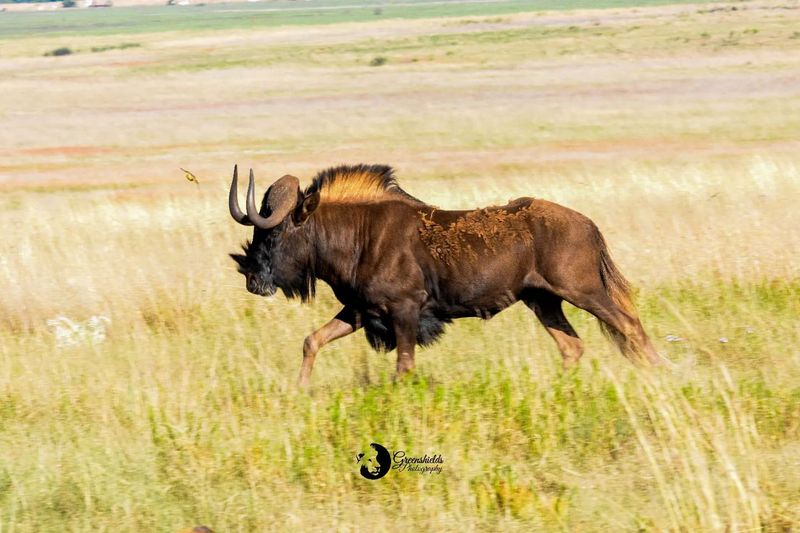
The Black Wildebeest, also known as the white-tailed gnu, is a striking animal found in South Africa’s grasslands. Its bluish tongue is one of the subtle features that distinguish it from other herbivores in its habitat. This tongue aids in the wildebeest’s grazing habits, allowing it to efficiently consume grasses and browse.
Its unique coloration may play a role in its feeding efficiency, although the exact reason remains a topic of scientific curiosity. Known for their migratory behavior, Black Wildebeests form massive herds that traverse the plains in search of food and water.
Their bluish tongue is just one of many adaptations that enable them to thrive in a challenging environment. As a key part of the African ecosystem, the Black Wildebeest’s distinctive traits contribute to its survival and success.
9. Goral
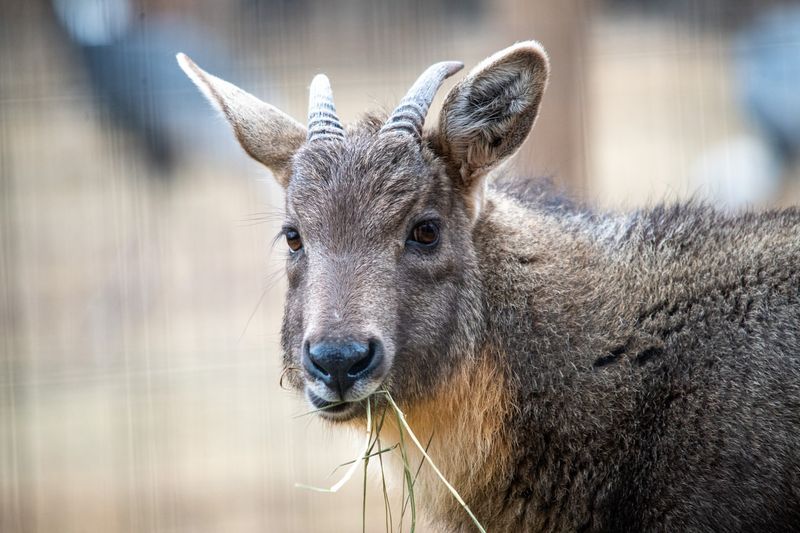
This goat-antelope found in the mountainous regions of the Himalayas is known for its agility and blue-tinged tongue. This tongue coloration aids in foraging, allowing Goral to identify nutritious plants in their rocky habitats.
Life in the mountains requires specialized adaptations, and the Goral’s tongue is part of its survival toolkit. Along with its strong legs and keen senses, this unique feature supports its lifestyle in challenging terrains. Gorals are elusive and rarely seen, adding to their enigmatic reputation.
Their blue tongue, combined with their solitary nature, makes them a captivating subject for wildlife enthusiasts. As a symbol of Himalayan biodiversity, the Goral’s distinctive traits highlight the adaptability of life in extreme environments.
10. Eastern Indigo Snake
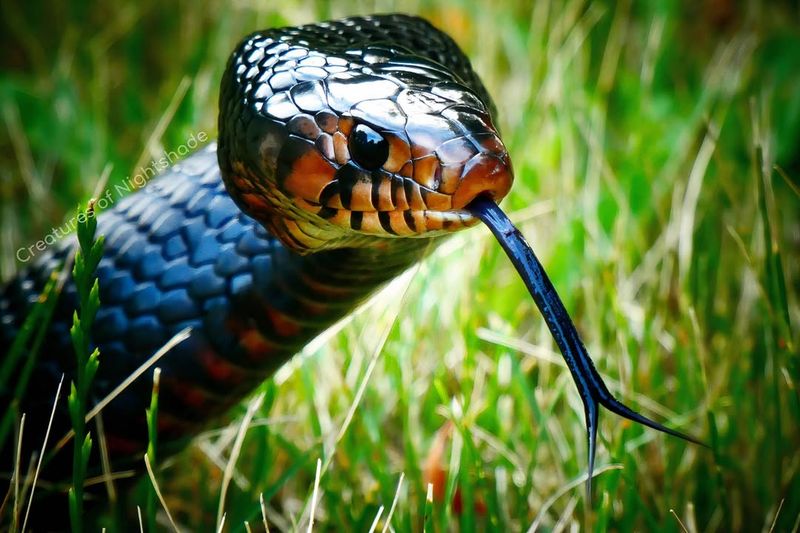
Native to the southeastern United States, the Eastern Indigo Snake is a majestic reptile known for its lustrous scales and blue-tinged tongue. This non-venomous snake uses its tongue for tasting the air and navigating its environment. Its striking appearance and docile nature make the Eastern Indigo Snake a favorite among herpetologists.
Its tongue, blue in hue, plays a vital role in its sensory capabilities, allowing it to detect prey and navigate its forest habitat. Despite its beauty, this snake faces threats from habitat loss and human activities. Conservation efforts are underway to protect its populations and preserve its natural habitats.
The Eastern Indigo Snake’s blue tongue, combined with its ecological significance, makes it an important symbol of North American wildlife conservation.
11. Nilgai
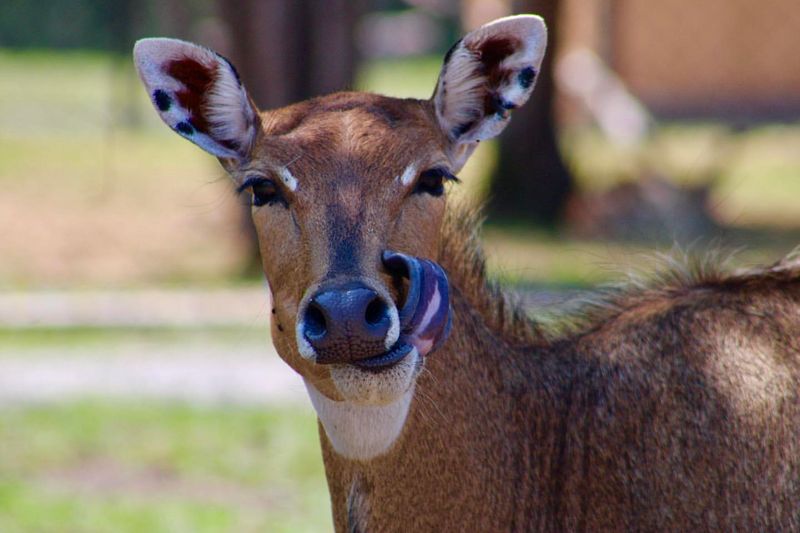
The Nilgai, also known as the ‘blue bull,’ is the largest Asian antelope, found in the grasslands of India. Its name reflects its bluish-grey coat and the occasional blue hue of its tongue, which aids in feeding.
This antelope’s tongue helps it select the most nutritious grasses and plants, contributing to its survival in the diverse Indian landscapes. Its feeding habits are a key aspect of its ecology, supporting other species in its habitat. Nilgais are social animals, often seen in herds. Their blue tongue, though not their most prominent feature, adds to their uniqueness.
As a vital part of the Indian ecosystem, the Nilgai’s adaptations and behaviors continue to be studied and appreciated by wildlife biologists.
12. Blue Whales
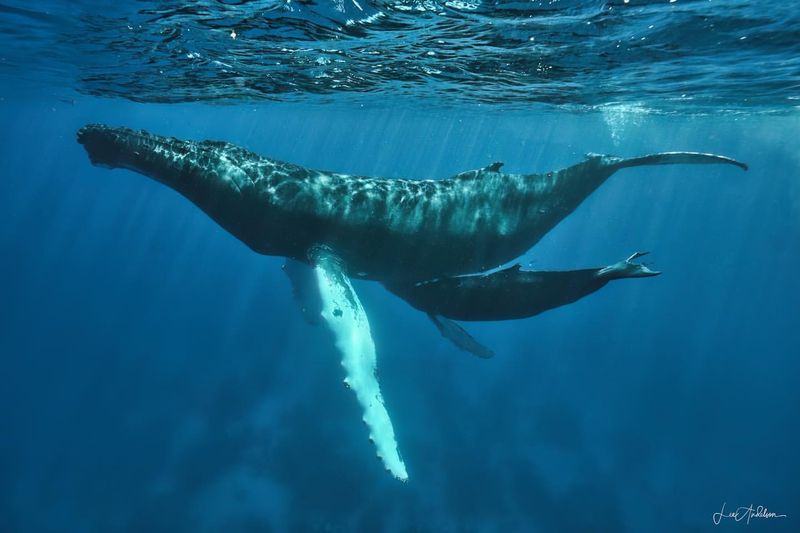
Blue Whales, the largest animals on Earth, have tongues that can weigh as much as an elephant. These massive creatures possess a bluish tint on their tongues, which matches their overall majestic appearance.
The blue tongue aids in feeding by helping these whales consume vast amounts of krill, their primary diet. As filter feeders, Blue Whales require specialized physical traits to support their enormous size and feeding needs.
Their presence in oceanic ecosystems makes them a keystone species, essential for maintaining ecological balance. Conservation efforts are crucial to ensure their survival, as they face threats from human activities and environmental changes.
The Blue Whale’s blue tongue, alongside its immense size, captures the imagination of marine biologists and nature lovers alike.
13. Saiga Antelope
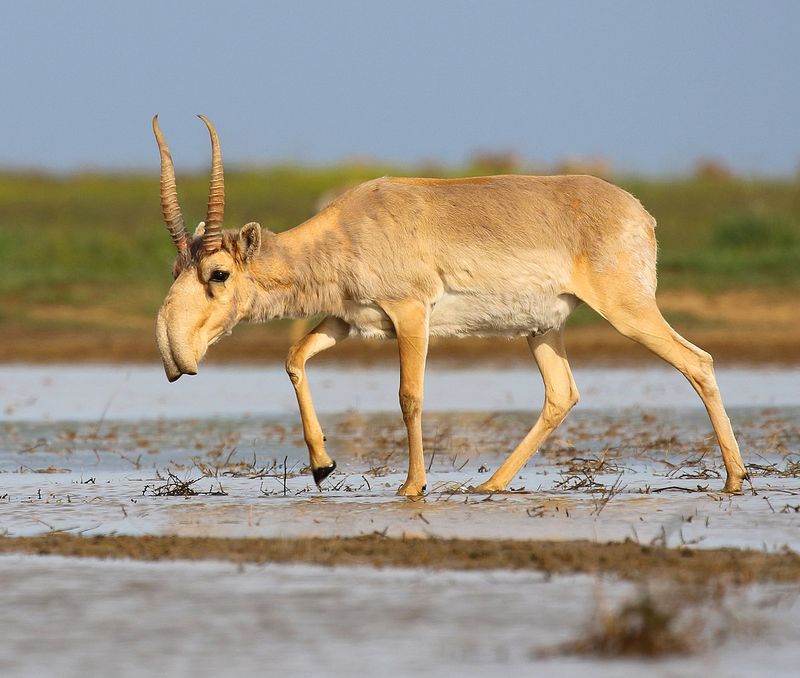
With its distinctive bulbous nose, The Saiga Antelope is a unique ungulate found in the steppes of Central Asia. Its blue tongue assists in foraging, allowing it to identify nutritious plants in its harsh environment. This antelope’s tongue coloration may have evolved as an adaptation to its diet and climate, although its exact purpose remains a topic of research.
Saiga Antelope are known for their extraordinary migratory patterns, covering vast distances in search of food and water. Despite their resilience, Saiga populations have declined due to habitat loss and hunting. Conservation programs aim to protect these remarkable creatures and their habitats.
The Saiga’s blue tongue, combined with its peculiar appearance, makes it a symbol of survival and adaptation in challenging landscapes.
14. Gelada Baboon
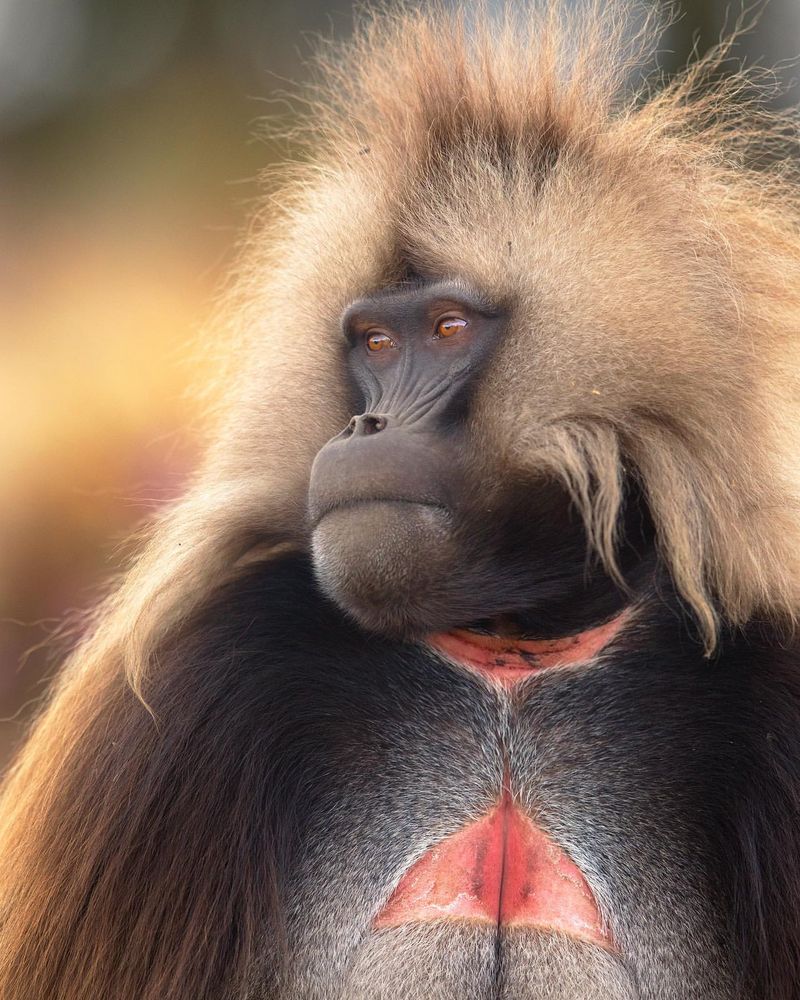
The Gelada Baboon, native to the Ethiopian highlands, is known for its complex social structure and expressive faces. Among its unique traits is a blue tongue, which plays a role in its communication and social interactions.
This tongue, visible during various expressions, is part of the baboon’s intricate signaling system. Combined with their vocalizations and facial cues, the blue tongue helps convey emotions and intentions within their groups. Geladas are grass-eating primates, spending much of their time foraging in the highlands.
As a species of great interest to primatologists, the Gelada Baboon continues to intrigue with its social complexity and distinctive traits.




